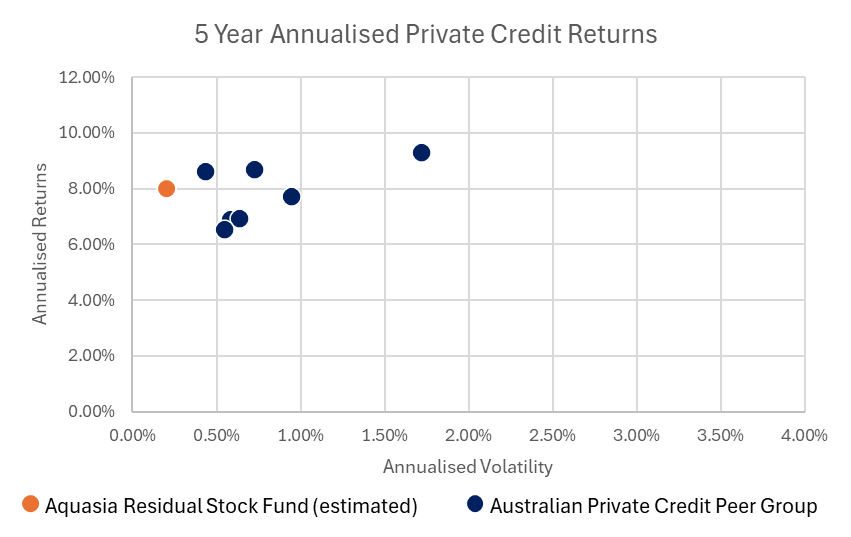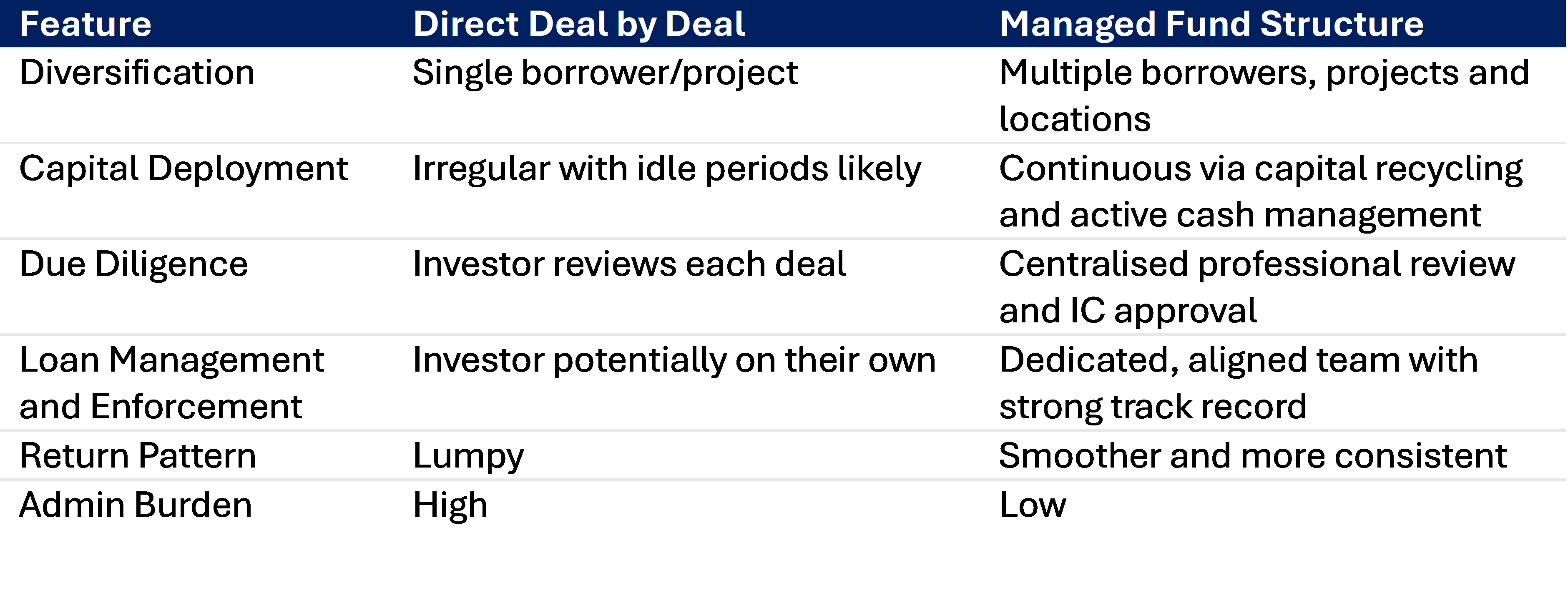From bricks to bucks: turning unsold apartments into defensive returns
There’s a quiet corner of Australia’s private credit market that has been hiding in plain sight. It doesn’t make headlines. It isn’t the subject of high-profile investor conferences. And yet, for those who know where to look, it offers yields that rival far riskier private credit strategies while being backed by something the market knows and loves: approved and completed residential real estate, ready for sale.
We’re talking about residual stock loans, a segment of lending so niche that many sophisticated investors have never considered it. That lack of attention has been a gift to those who have.
For years, this strategy has been quietly generating high single-digit returns, often with lower risk than the corporate or construction lending that dominates private credit portfolios. But as the market evolves, the way investors can access residual stock loans is changing, and with it, the potential returns on offer.
The Gap the Banks Left Behind
You know the story. Over the past decade, changes to regulatory capital requirements have reshaped the lending landscape. By increasing the amount of capital banks must hold against certain types of loans, regulators have made many once-standard lending activities far less attractive for the major banks. Entire segments that previously sat comfortably on bank balance sheets have been left under-served, creating space for non-bank and private lenders to step in and fill the void.
One of the most attractive of these under-served segments is post-completion residential stock. When a residential development project finishes, the costly construction loan that funded it doesn’t automatically reprice to a cheaper rate. That leaves developers with a binary choice. They can either sell quickly, often at a discount, in order to repay the construction facility, or they can find an alternative form of finance.
Residual stock loans are that alternative.
What Exactly Is a Residual Stock Loan?
Strip away the jargon and a residual stock loan is a very simple solution. The “residual stock” is the unsold dwellings in a completed residential development. Therefore, a residual stock loan is a short-term, interest-only loan secured against those dwellings. The loan is repaid as the dwellings sell, progressively reducing both the loan balance and the lender’s risk.
Typical parameters vary but are generally conservative:
- Loan to Value Ratio (LVR): 65–75% of independently assessed market value
- Term: 6–18 months
- Security: First mortgage over completed properties
- Exit: Proceeds from sales applied to reduce outstanding loan
It’s not speculative land banking. It’s not construction lending. It’s a short term loan against completed residential dwellings, which is a fundamentally different risk profile to many other forms of private credit.
Why Developers Use Them — and Why That’s Good for Investors
Residual stock loans exist because they solve a high-value problem for developers:
- Liquidity without compromise – Developers can access the equity tied up in completed stock without discounting sales just to release cash.
- Better funding mix – Refinancing expensive construction debt with lower-cost, fit-for-purpose financing.
- Allows time to capture market value – Especially in higher-end projects, where buyers want to walk through the finished property before committing.
In fact, many developers will avoid selling any stock before absolutely necessary, knowing a well presented and completed property will achieve the highest sale price. From an investor’s perspective, this is ideal. The borrower is motivated to repay in order to realise their own profit. Meanwhile, the underlying collateral is tangible and sellable, and the sales process itself actually reduces the risk of the loan over time.
The Compelling Investor Case
Here’s what makes residual stock loans stand out on the Australian private credit spectrum:
- No completion risk – You’re not funding a building site, you’re lending against finished dwellings.
- Built-in de-risking – Every sale reduces the LVR, pays down the outstanding loan amount and strengthens the lender’s position.
- Short duration – generally a 6-18 month term to maturity, which can be reduced if sales are ahead of schedule.
- Strong returns – yields are typically 7-9% p.a. which rivals a majority of the riskier private credit strategies in the market.
Historical resilience – Australian housing has a decades-long track record of avoiding systemic collapse, underpinned by full-recourse lending, tight credit standards and chronic supply shortages.
In other words: you’re earning strong yields from a position that is structurally safer than many private credit alternatives.

The Structural Shift: Targeted Exposure via Managed Funds
Historically, investors wanting to gain exposure to residual stock loans could only do so by participating in direct, deal by deal transactions. These opportunities are typically sourced and vetted by developers, family offices or specialist credit desks. While this approach offers full transparency into the underlying asset and terms, it also comes with significant limitations:
- Concentration risk – Exposure to a single borrower, project and postcode.
- Inconsistent deployment – Capital could sit idle for months between deals or until enough capital has been repaid to allow for redeployment.
- High due diligence burden – Each transaction requires bespoke analysis, negotiation, and documentation.
Over time, a range of broader private credit funds have emerged in Australia. These funds pool capital into diversified loan portfolios, often including residual stock loans alongside other strategies such as construction or other property finance, corporate lending, or receivables funding. While this provides diversification and removes the operational burden of sourcing deals, it can also dilute the targeted exposure an investor may be seeking due to:
- Limited exposure – Residual stock loans may represent only a small portion of the portfolio, reducing their impact on overall performance.
- Variable risk profile – Inclusion of higher-risk credit types can alter the fund’s defensive characteristics.
Now, a third model is taking shape. Dedicated managed funds focusing solely on residual stock loans.

Why the Managed Fund Model Changes the Game
The opportunity within residual stock loans has been proven. Now sophisticated investors are demanding an evolution in access. A targeted managed fund solution delivers three big advantages over the direct deal by deal approach:
- Diversification – Spreading exposure across borrowers, projects, and locations reduces idiosyncratic risk.
- Capital recycling – As stock is settled and loans are repaid, capital is redeployed, keeping money working and boosting long-term IRR.
- Operational efficiency – Professional credit teams handle underwriting, monitoring, and enforcement, meaning no deal by deal hassle for investors.
Over a multi-year horizon, this can mean a meaningfully higher net return than a single-loan approach, even with identical loan yields.

Risks Still Matter
Residual stock loans are defensive, but not risk-free. Execution risk in the sales process, valuation integrity and geographic concentration all matter. This is where disciplined due diligence and a strong track record are critical, and where the difference between an average manager and a great one will be felt.
Why This Opportunity Exists Right Now
The market dynamics for residual stock loans are particularly favourable today. High construction costs and tight market for development finance mean developers are more selective and value trusted partners who can lend quickly post-completion. Additionally, persistently low housing supply in most Australian cities supports sale prices for completed dwellings over the long term. The banks’ retreat from post-completion lending leaves a gap that private capital is well-placed to fill.
Investors willing to allocate now are stepping into a supply-constrained environment with a high-quality borrower pool and a clear path to repayment.
The Bottom Line
Residual stock loans are one of the few places in the Australian private credit market where investors can combine:
- Tangible asset backed security
- Strong, consistent yield
- Short duration
- A natural de-risking mechanism
And now, with managed fund structures bringing diversification, capital recycling and active cash management into the mix, they’re even easier to access.
For those constructing a private credit allocation, ignoring this corner of the market could mean leaving both yield and resilience on the table. For those who already understand it, targeted managed funds just made their life that much easier.
4 topics

